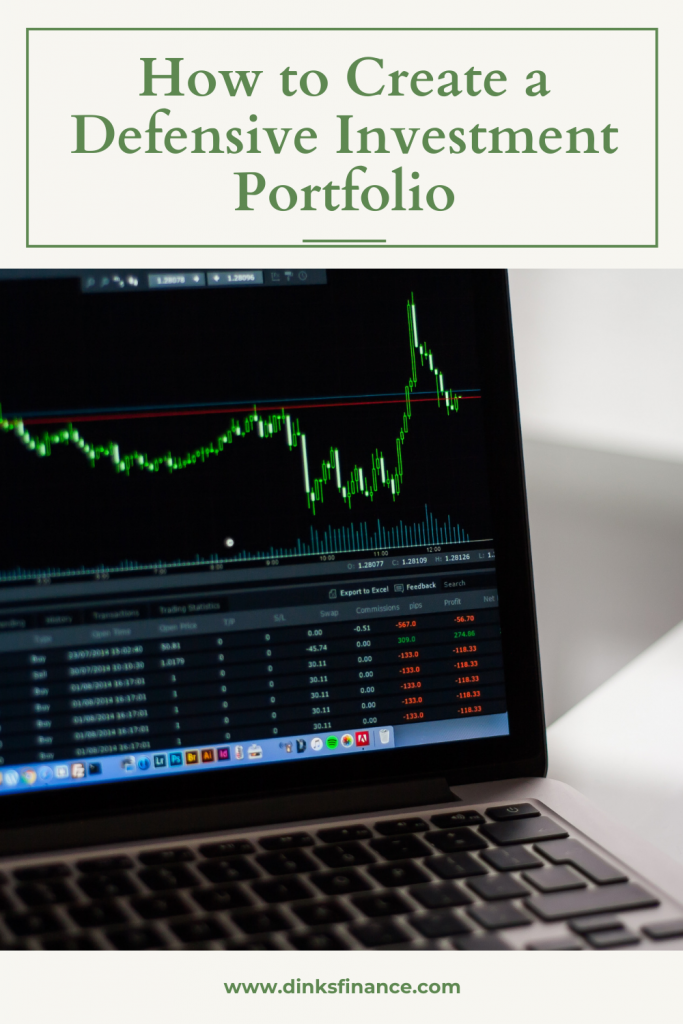
With 2020 throwing so much uncertainty upon us, it is becoming more evident that everyone’s portfolio needs to be thoroughly vetted to ensure you’re not just playing a good offense, but also a good defense. The longest bull run of the stock market showed us that there are incredible possibilities when it comes to making money in the market, however, the beginning of this year brought us back down to Earth to show us how we always need to stay on our toes. In this article, we will be discussing how to create a defensive investment portfolio and trust me, you will want to implement this soon.
Why You Need A Defensive Portfolio Strategy
Have you ever heard that the stock market is cyclical? Well, do you know what that really means?
This graph below from Stock Charts does a great job visibly showing what happens in the stock market over a period of time. Please note that the period of time varies greatly and that these cycles happen at a micro-scale with individual stocks however we are talking about the macro-scale meaning the entire stock market.

As you can probably guess, the high points or “crests” of the market and even the climb up to them are when we are in a bull market. All prices seem to be rising consistently and odds are in your favor of making money.
However, in the Trough or cycle low is when the bear market is present. Even the downhill slope to the trough counts towards the bear market. This is when it is really hard to make money in the stock market and you have to do far more comprehensive due diligence to enhance your odds of earning some dough from your investments.
This graph represents the market cycles. The length of time can vary but no matter what there are crests and troughs in the market. While most people invest to try to make as much money as they can (they see the crests and get money symbols in their eyes), it is important to also realize that a huge win is to not lose money in the market. This is why it is important to have both an offensive and defensive strategy when it comes to investing in the stock market.
Risks Of The Stock Market
While some investors begin at a much younger age others don’t. These factors need to be considered before entering the market. If you are 18 years old and beginning to invest for retirement, odds are that your money can weather some troughs or bear markets however if you are 50 and beginning to invest for retirement, you really don’t have the same advantage as younger folks do when it comes to time. You want to make sure your portfolio is set up to not lose, maybe you won’t see as great of gains but you really don’t have time to be losing large sums of money.
That is the inherent risk of investing. This is why so many great investors say that prior to even putting any money into the stock market, it is important to make sure that you understand your goals and the timing that accompanies them. That way you can try your best to set your portfolio up for success.
The most common Rule of Thumb when figuring out how much of your portfolio should be focused on defensive assets (like the ones listed below) is that if you take your age and subtract it from 110, that amount is the percent that your portfolio should consist of equities and the remaining percent should be more defensive assets.
How To Boost Your Defense Game
#1. Bonds
Bonds are investments that give you far more security around any gains. There isn’t any technical “guarantee” in the market but a bond is as close as a guarantee that you will get.
There are several different types of bonds to invest in. There are United States Treasury Bonds, Treasury Inflation-Protected Bonds (also known as TIPs), corporate bonds, municipal bonds, etc.
What bonds really are is pretty simple. It is you lending your money to a borrower and them paying you back in X number of years with X interest. Your returns change based upon what you choose for both X variables, but they are both up to you. For the most corporate bonds, meaning you are lending your money to companies, pay you back a higher interest but they are riskier on defaulting that means too which could mean you get no money back at all.
Many investors choose U.S. Treasury bonds or municpal bonds to add to their portfolio’s defensive strategy because they are for the most part, the safest possible bonds. However, they also usually offer the lowest interest rates so you won’t be earning too much money but likely just enough to beat inflation. The only way for these bonds to default would be the country or city defaulting on all of its debt which is very unlikely.
To learn about other investment strategies, check out this article!
#2. Commodities
Commodities are any physical assets that either produce income or increase in value over time. These assets include things like real estate, gold, rare coins, art, blogs, etc. Their value isn’t driven by the stock market per se. Instead, their values are correlated to the state of the economy and demand for this specific item. These assets are usually a great defense against inflation as well since they are technically their own form of currency. For those interested in the specific nuances and strategies of engaging with such markets, learning about commodities trading could provide valuable insights.
These are a solid addition to your portfolio if you are looking to invest for cash flow. In particular, real estate and websites can be incredibly lucrative on a monthly basis if you are looking to build up a strong monthly income.
Interested in investing in real estate? Check out this article to see if real estate investing is for you!
#3. Dividend Stocks
Divident stocks are stocks that pay you, the investor on a regular basis. These are stocks for large companies that pay the investor back when the company has extra earnings. Technology and health care companies are two of the more notorious types of dividend-paying companies and actually continued to pay dividends even throughout the 2008 financial crisis.
These are also a great addition to your portfolio if you want to set up solid monthly cash flow.
If you’re interested in other ways to build up your cash flow, check out this article!
#4. Inverse Funds
Inverse funds are funds (think like mutual funds) that actually move in the opposite direction of the stock market. So if you buy into an S&P 500 inverse fund, when the S&P 500 index is losing value, these funds are actually gaining value. These are great additions to your portfolio to help offset any losses. These can greatly help a portfolio be less exposed to some major price swings.
Final Thoughts
Whether you are just starting to invest in the stock market or you have been investing for decades, it is always important to understand your asset allocation to make sure you are fully prepared and setting yourself up for success. If you aren’t sure exactly how to be allocated, definitely use the rule of thumb mentioned earlier in this article. Regardless, you should always be educating yourself on how to have the most successful investments, you owe it to yourself!
How is your portfolio allocated?
For more reads, check out these recent articles!
- Is Your Broker A Thief?
- What Are The Traits That Make For A Great Investor
- This Is Why A Lot Of Rich People Exaggerate Their Net Worth



No Comments yet!